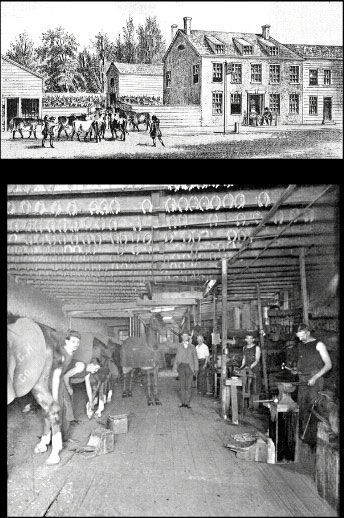

For much of New York's history, live cattle, sheep and pigs were brought to stockyards within the city where butchers bought the animals before slaughtering them and selling the meat. From 1825 to 1846, New York's central cattle market, known as the Bull's Head Market, was located between 24th and 25th Streets, Third and Lexington Avenues. 24th Street was the third location of the Bull's Head Market, which periodically moved to the edge of the developed part of the city as New York expanded uptown. The Bull's Head Market had been located in lower Manhattan from the 1650s to the 1750s and on the Bowery just below Canal Street from the 1750s to 1825. There, it was owned by Henry Astor, brother of John Jacob Astor.
When the Bull's Head Market opened at 24th Street, the area was just giving way from the pastoral Rose Hill Farm to the grid of numbered city streets. The new market consisted of pens that could hold 700 cattle plus sheep and pigs. The surrounding area, between 23rd and 27th Streets, Second and Fourth Avenues (now Park Avenue South) became known for a time as Bull's Head Village.
Cattle drovers brought herds of cattle to the market from agricultural areas near New York and from as far away as Ohio. The herds moved across the Harlem River at Kings Bridge (near present 225th Street) and down the newly created Third Avenue. In 1825, it was estimated that nearly 200,000 cattle were driven to the various cattle markets in New York in this manner.